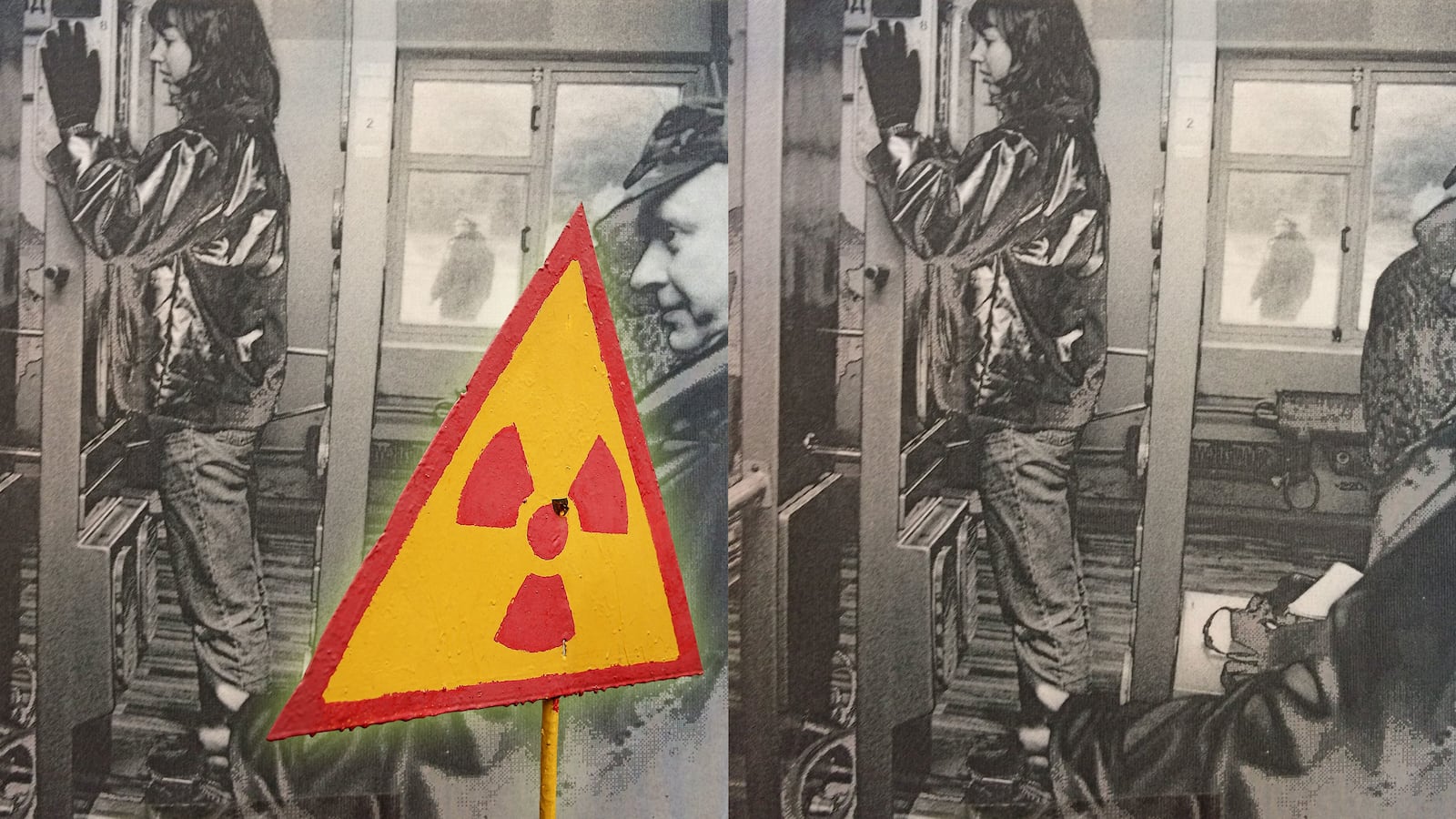A shot glass of vodka was pushed toward me.
No words were spoken. None needed to be. I was in Ukraine after all. I was used to starting interviews by downing shots. At an early breakfast meeting in eastern Ukraine shot glasses were part of the table setting—and already filled with brandy.
But this shot of vodka was different. It was home brew—from Chernobyl. Or, to be more exact, from the exclusion zone surrounding Chernobyl nuclear power plant, site of the world’s worst nuclear disaster. I encountered the shot glass on my first trip to Chernobyl in 2000. It was not my last trip.
The current HBO Chernobyl miniseries chronicles the horror of the initial 1986 accident and subsequent fire that released about 50 tons of radioactive dust and debris into the air. But the tragedy didn’t end in 1986. I lived and reported from the former Soviet Union from roughly 1998 to 2003. Chernobyl was one of the stories that I covered. Even then, more than a decade after the explosion, it was still wreaking havoc.
The worst of the dust and debris settled in the 30-kilometer (18-mile) exclusion zone surrounding Chernobyl nuclear power plant. That is where I was offered home brew vodka 14 years later. This was before Chernobyl became an exotic destination for journalists and thrill-seeking tourists. At the time, most people didn’t visit the Chernobyl exclusion zone, and they certainly didn’t live in it. There was no mail service, no bus service, no electricity, and no shops. Yet there were a handful of older former residents who had returned to an area that was officially off-limits to human habitation. My hostess was one of them. I was a reporter. I wanted to hear her story. But she wouldn’t tell it unless I drank her vodka.
I knew the danger. After the disaster, 80 percent of those who received additional doses of radiation had become ill. I had interviewed some of them. Scientists had told me that one of the worst things to do in the exclusion zone was to consume locally produced food and drink.
I pushed the shot glass back toward my hostess.
She pushed it back toward me.
We were at an impasse. I was a 20-something California native up against a Ukrainian babushka. I didn’t stand a chance. She had survived war, possibly famine, and a government that cared so little for its people that it did not evacuate residents for days after the disaster.
I forced the clear liquid down. It burned first my throat and then my stomach. I begged for water after my first timid sip. I was not a drinker. But my torturer refused me any relief until after I had finished the entire shot glass. At another home I visited in the exclusion zone that day, I was fed homemade blueberry blintzes. I tried to forget the lessons I had learned about the half-life of various radioactive elements as I dug in. They were delicious. Earlier warnings about staying on the pavement and avoiding the grass because of its higher contamination levels now seemed pointless.
It was Anatoly who had warned me about the grass. He was my guide that day. Back then it was difficult to visit the exclusion zone. As a former resident, Anatoly had papers that allowed him to enter. He also knew how to get around cities that no longer had street signs and how to find people in neighborhoods that seemed empty of all inhabitants. Mainly he was willing to take me in his vehicle, an accommodation for which he charged an extra “contamination fee.” I don’t remember having to pay a human contamination fee, maybe that was just a given for a former resident. It wasn’t for other Ukrainians.
My friend Jenia begged me not to take her boyfriend, Viktor, the photographer I worked with. I left it up to him. He decided to go. He is dead now. Not a victim of Chernobyl, but of Ukraine’s deadly roads. I imagine my hostess and the other elderly residents I met are also probably dead now, although I am not sure. Ukrainian babushkas are a pretty hardy breed. They had to be. As did all the former residents of the exclusion zone.
After we met the babushkas, we visited Anatoly’s childhood home. A tree blocked the entrance. The home’s metal fixtures had been stolen and sold. The place was a mess of dust, debris, and tossed belongings. A calendar hung untouched on the wall stuck on April 1986. In Anatoly’s younger sister’s bedroom, the walls were plastered with male heartthrobs from the 1980s. On the floor Anatoly found a family photo and reached to pick it up. I asked if he would take it with him. He shook his head no. His explanation was simple: “The dust.”
Anatoly had been in Kiev when the accident happened, but his sister and father were in what later became the exclusion zone surrounding Chernobyl. Anatoly only understood pieces of what had happened from BBC radio broadcasts. When he was finally able to talk to his sister, she told him their father was drinking vodka to protect himself from radiation. Anatoly told her to shut all the windows and stay inside. He worked on trying to sneak her out. The government had stopped all traffic to and from the region. Later they evacuated residents, telling them they would be able to return soon. Evacuees I spoke with remember being denied water when they stopped along the way. In the vacuum left by government denials and information blackouts, rumors spread. People avoided former residents, fearful that their “contamination” was contagious. The government provided evacuees with housing, but it was badly constructed, and several evacuees told me their walls crumbled the first winter. That is why they later returned. They came back because Chernobyl was their home.
For me it was a story.
Before leaving the exclusion zone that day, I had to pass through a radiation detector. If my levels were too high, I was told I would have to stay. I passed. The fish Anatoly had been given by a friend did not. On the ride back to Kiev, the thrill of the assignment started to fade. Alone back in my apartment, I took a long shower. As I scrubbed my skin, I thought about the shower scene from the 1983 film Silkwood, the true story of a woman who works at a nuclear facility and is exposed to high levels of radiation. Once out of the shower I threw the clothes I had worn in the back of my closet. A few minutes later I dug them out. I wrapped them up before again trying to hide them from sight.
Before the year was over, I returned to Chernobyl. It was on that trip, my second, that I met the man I would marry.
Katya Cengel is a freelance writer based in San Luis Obispo, California. Her new book, From Chernobyl with Love: Reporting from the Ruins of the Soviet Union (Potomac Books, 2019), will be published in November.







